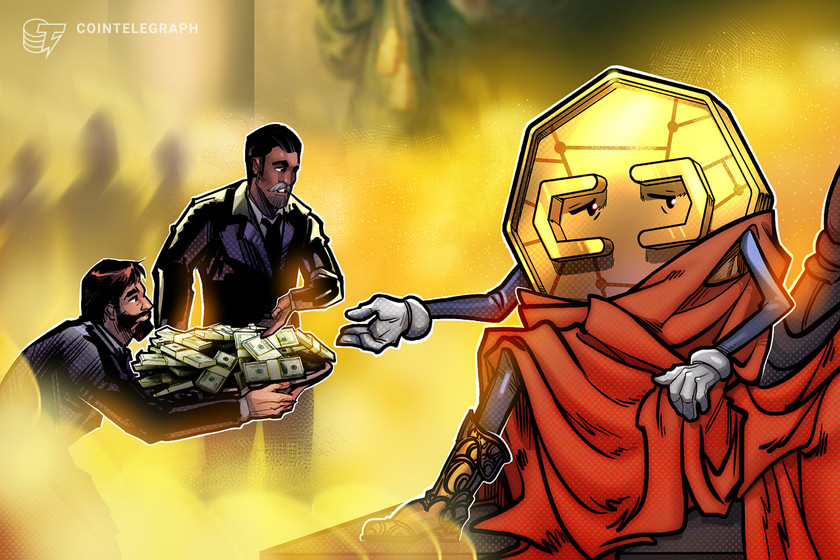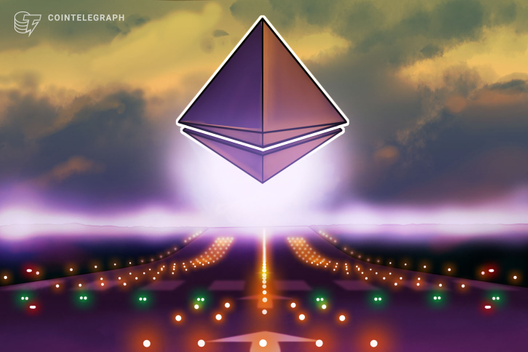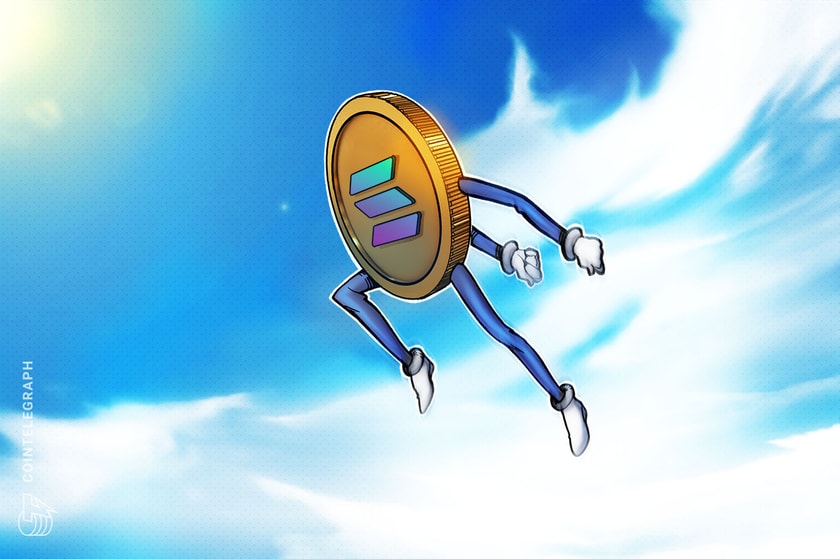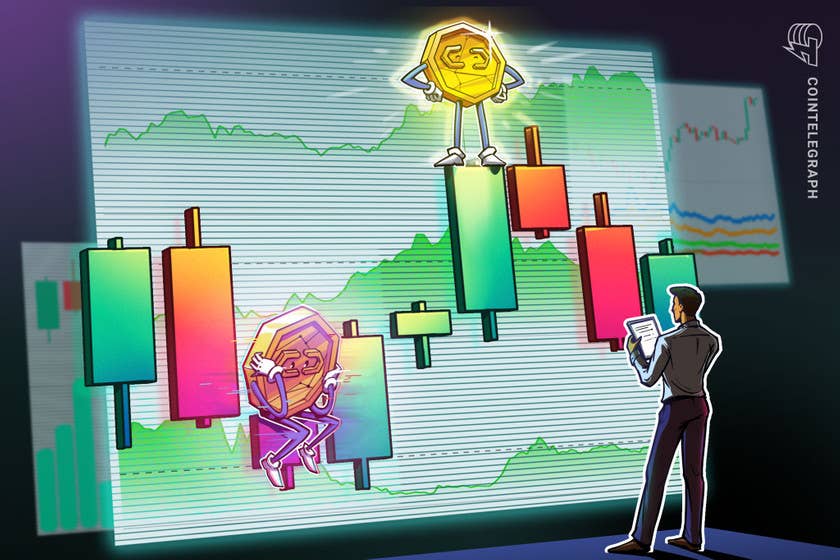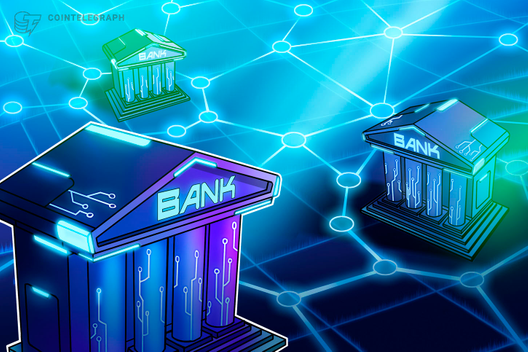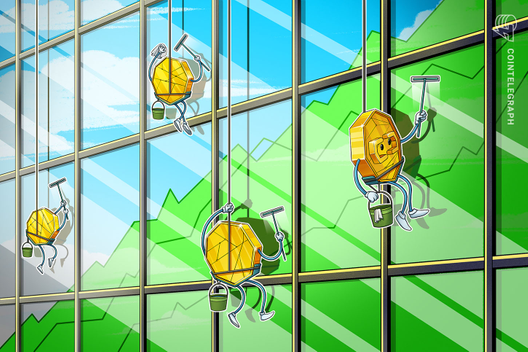Embracing the shift in Web3 gaming: From play-to-earn to play-and-earn
The blockchain gaming market has grown rapidly. The Polaris Market Research Blockchain Gaming Report shows that the total transaction volume for blockchain games reached $5.41 billion in 2022 and is expected to grow at a CAGR of 68.9% during their forecast period.
According to DappRadar x BGA Games Report 2022, Polygon’s emphasis on gaming and the metaverse led to a remarkable 338% UAW growth from the previous year, reaching an average of 97,384 daily UAWs. In 2022, Polygon’s popularity as a gaming chain soared, driven by successful game dApps like Arc8, Benji Bananas, Crazy Defense Heroes and Pegaxy.
As the industry evolves, there’s a paradigm shift from the traditional play-to-earn (P2E) model to a more sustainable and inclusive play-and-earn (PAE) approach. This shift is crucial to address the criticisms of P2E, ensuring enjoyable gaming experiences while maintaining financial rewards for players.
In this article, we will explore both models, compare them and discuss why the PAE model is essential for the long-term success of the Web3 gaming industry. We will delve into P2E and PAE models, comparing them and discussing the essential changes the industry must make for sustainable growth and long-term success.
The play-to-earn (P2E) model: A brief overview
The P2E model, enabling gamers to earn digital assets, has revolutionized the gaming industry. DappRadar reports that gaming accounts for nearly 50% of dApp on-chain activity. In 2022, daily unique active wallets (UAW) linked to game dApps surged by 60% year-over-year, with on-chain game transactions reaching 7.4 billion—a 37% annual increase and a 3,260% growth since 2020.
The P2E model revolves around players participating in games, completing tasks and receiving in-game rewards or cryptocurrency as compensation. With the advent of blockchain technology, games like Axie Infinity have popularized this model, attracting millions of users worldwide.
However, this model has its drawbacks. As the market grows, an increasing number of projects focus on the profit potential, creating games designed primarily for earning rewards rather than providing enjoyable gameplay experiences. Additionally, the P2E model can contribute to inflation, with some games experiencing token devaluation due to excessive rewards. This model has faced criticism for several reasons:
Join the community where you can transform the future. Cointelegraph Innovation Circle brings blockchain technology leaders together to connect, collaborate and publish. Apply today
- Unsustainable tokenomics: Rapid inflation and deflation of in-game tokens often lead to a lack of sustainability and short-lived games.
- Poor game quality: Many P2E games prioritize income generation over enjoyable gameplay, resulting in a subpar gaming experience.
- Wealth inequality: Wealthier players with more resources can dominate the game, creating disparities among players.
The play-and-earn (PAE) model
The PAE model, as I’ve advocated for previously, addresses the limitations of P2E by combining enjoyable gameplay with earning opportunities. The focus shifts from purely monetary incentives to a more balanced approach that prioritizes the user experience.
The PAE model combines the financial rewards of P2E gaming with engaging gameplay experiences, focusing on sustainability and attracting players for both the earning potential and enjoyable gaming experience. To successfully develop a P&E game, the following actions are recommended:
- Prioritize security and transparency: Implement robust security measures to protect player data and assets while maintaining transparency in the game’s tokenomics and governance.
- Establish partnerships: Collaborate with other game developers, content creator and platforms to expand the game’s reach and offer unique opportunities for cross-promotion and collaboration.
- Provide continuous updates and content: Regularly release new content, features and updates to keep the game fresh and maintain player interest over time.
- Educate players: Offer accessible resources and tutorials to help players understand the technology behind the game, making it easier for them to participate in the blockchain gaming ecosystem.
- Balance in-game economy: Regularly monitor and adjust the in-game economy to maintain a fair balance between supply and demand, ensuring stable token value and rewards.
- Offer diverse earning opportunities: Provide a variety of ways for players to earn, such as through in-game achievements, trading NFTs or participating in community events.
- Focus on storytelling: Develop an engaging storyline and lore to immerse players in the game world and create a deeper emotional connection with the gaming experience.
Comparing P2E and PAE models
- Sustainability: PAE prioritizes sustainable tokenomics and long-term growth, whereas P2E often suffers from rapid inflation and deflation of in-game tokens.
- Game quality: PAE emphasizes enjoyable gameplay, while P2E games frequently sacrifice quality for income generation.
- Inclusivity: PAE aims to make games accessible to a broader audience by incorporating free-to-play models, while P2E primarily focuses on players with the resources to invest in digital assets.
For the Web3 gaming industry to thrive, it must consider embracing the shift from P2E to PAE. The PAE model offers a more sustainable and enjoyable gaming experience while still providing financial incentives for players. This shift will help mitigate the criticisms associated with P2E and create a more balanced and inclusive gaming ecosystem.
Despite its early stage, blockchain gaming shows immense potential with just 1.15 million daily UAWs linked to gaming dApps, a mere 0.5% of Ethereum’s 226 million unique addresses alone. The industry’s growth can be maximized by adopting sustainable practices like the PAE model, which tackles wealth inequality, game quality and tokenomics. By addressing these issues, the PAE model can ensure long-term success and a positive reputation for the blockchain gaming sector.
The vital shift for sustainable Web3 gaming
The P2E model is driven primarily by the desire to earn, which leads to short-term thinking and an unsustainable game economy. Players may abandon the game when earning potential decreases or a more lucrative alternative emerges. Furthermore, P2E games can face regulatory scrutiny, as in the Philippines. In contrast, the PAE model focuses on providing a fun and engaging gaming experience that encourages long-term commitment from players. While earning opportunities still exist, they are secondary to gameplay, promoting a healthier balance between enjoyment and financial incentives.
Adopting the PAE model is crucial for the long-term success of the Web3 gaming industry, prioritizing enjoyable gameplay, diverse teams and sustainable ecosystems. This nurtures industry growth and maintains the financial rewards of P2E while focusing on fun, accessibility and community engagement. Embracing the PAE model can foster a thriving, inclusive and sustainable gaming ecosystem for Web2 gamers and crypto enthusiasts. As blockchain games rapidly grow, prioritizing enjoyable gameplay and sustainability can solidify the industry’s position in the global market and redefine how players interact with digital worlds.
Tomer Warschauer Nuni is CMO @Kryptomon, a serial entrepreneur and investor focused on the innovative blockchain and NFT gaming industry.
This article was published through Cointelegraph Innovation Circle, a vetted organization of senior executives and experts in the blockchain technology industry who are building the future through the power of connections, collaboration and thought leadership. Opinions expressed do not necessarily reflect those of Cointelegraph.
Learn more about Cointelegraph Innovation Circle and see if you qualify to join



